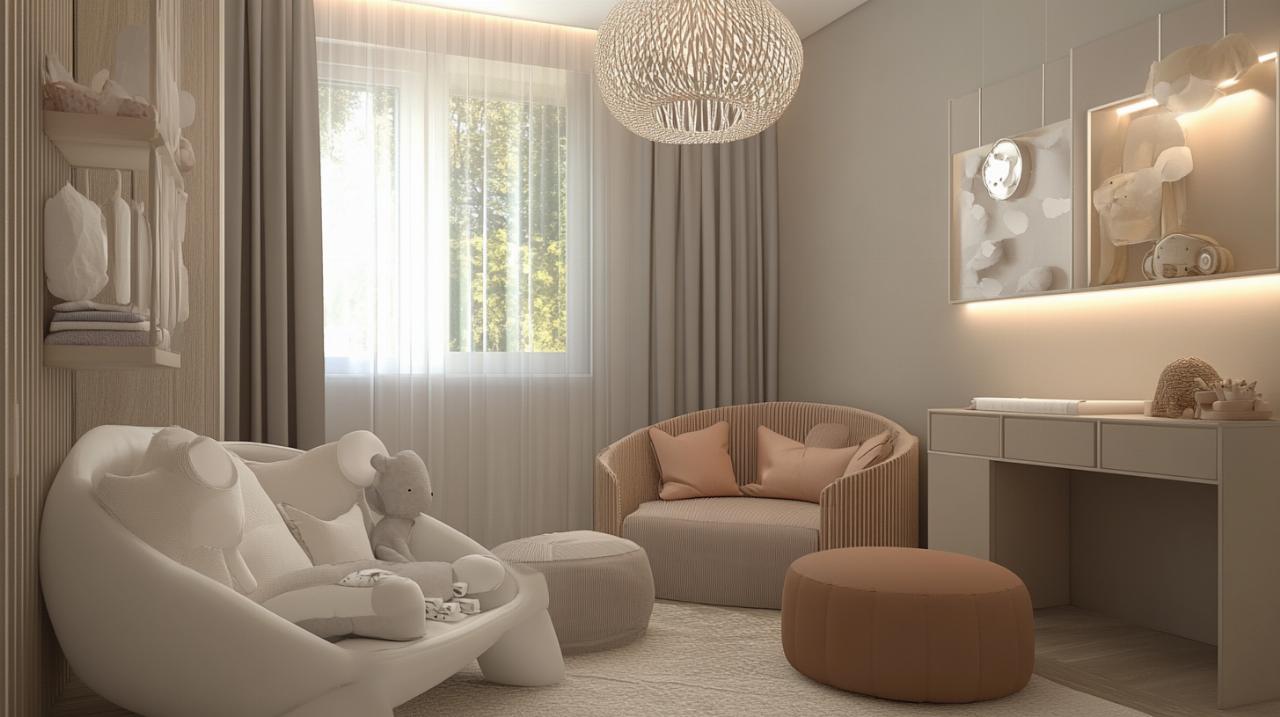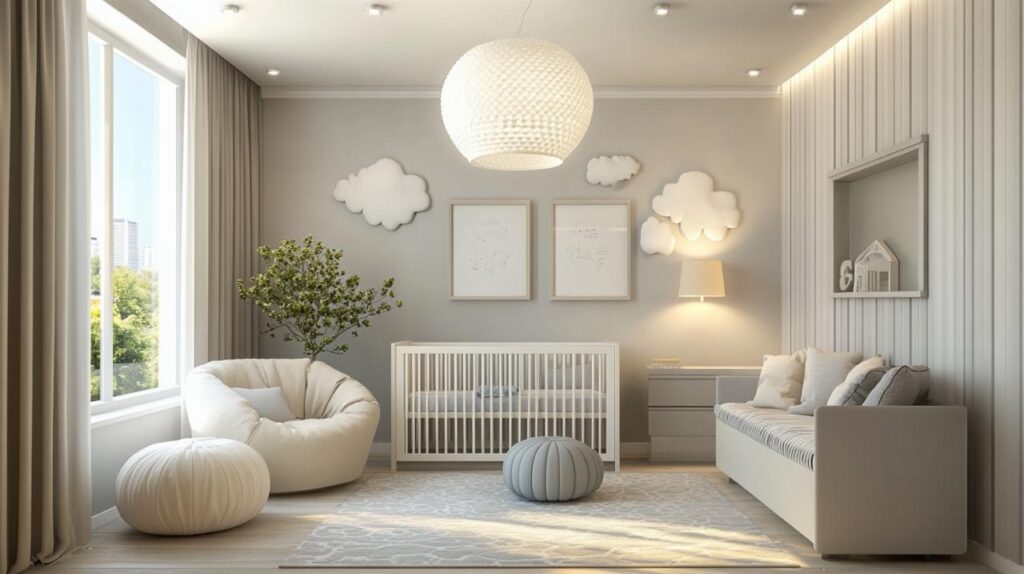Creating a nursery that balances contemporary aesthetics with practical functionality has become an essential consideration for expectant parents today. The space must serve as a calming sanctuary for the newest family member whilst also complementing the overall style of the home. With thoughtful planning and attention to detail, modern nursery design ideas can transform an ordinary room into a sophisticated retreat that grows alongside your child, reflecting both personality and taste.
Contemporary nursery themes to transform your space
The shift towards contemporary nursery design has opened up a world of possibilities for parents seeking to create a space that feels both fresh and timeless. Rather than relying on traditional pastels and predictable motifs, modern approaches embrace bold choices and distinctive styles that make a statement. The key lies in selecting a theme that resonates with your personal aesthetic whilst ensuring the room remains a functional and comfortable environment for your little one.
Minimalist and monochrome aesthetics
The minimalist approach to nursery design has gained considerable traction amongst stylish parents who appreciate clean lines and uncluttered spaces. Inspired by Scandinavian design principles, this aesthetic favours natural wood furniture, particularly cots crafted from sustainable materials, paired with a carefully curated neutral colour palette. Shades of grey, cream, and white dominate the space, creating a serene atmosphere that promotes rest and tranquillity. A single piece of statement art can provide visual interest without overwhelming the senses, proving that restraint often yields the most sophisticated results.
Monochrome nurseries take this concept further by embracing the dramatic contrast between black and white. Geometric patterns and bold stripes add visual stimulation that research suggests benefits infant development, whilst maintaining an undeniably chic appearance. The beauty of this approach lies in its versatility, as pops of colour can be easily introduced through soft furnishings such as cushions, throws, and rugs. A gender-neutral nursery designed in monochrome tones offers a timeless quality that transcends fleeting trends, and the look translates beautifully whether in a compact London flat or a spacious country home. Historical inspiration can be drawn from period properties, much like those found in Notting Hill, where dramatic geometric patterns have long adorned the walls of fashionable townhouses.
Nature-inspired design approaches
Bringing the outdoors inside has become an increasingly popular choice for parents seeking to create a nurturing and organic environment. Jungle-themed nurseries offer a playful yet sophisticated interpretation of this trend, featuring wallpaper adorned with exotic foliage and charming wildlife. Rather than veering into cartoon territory, the most successful examples incorporate realistic illustrations and muted colour palettes that maintain an air of refinement. Bamboo furniture, woven baskets, and carefully selected soft toys that echo the theme help to create a cohesive look that feels intentional rather than chaotic.
Botanical designs provide an alternative approach that emphasises natural textures and earthy tones. Linen curtains in soft shades, woven storage solutions, and sustainable wood furniture form the foundation of this aesthetic, which carries subtle bohemian undertones without feeling overly casual. Botanical prints can be introduced through framed artwork, wallpaper, or fabric choices, creating layers of interest that feel both calming and visually engaging. This style works particularly well in period properties, such as Oxfordshire cottages, where vintage fabric blinds and traditional interiors complement the nature-inspired theme. For those drawn to celestial wonder, cosmic-themed nurseries offer yet another nature-adjacent option, with gentle blues and purples evoking the night sky whilst glow-in-the-dark stars add an element of magic that delights both children and adults.
Essential Elements for a Functional and Beautiful Nursery
Beyond aesthetics, the most successful nurseries are those that seamlessly blend beauty with practicality. Every design choice should serve a purpose, contributing to the overall functionality of the space whilst maintaining visual appeal. This balance ensures that the nursery remains a pleasure to use during those demanding early months, when efficiency and comfort become paramount considerations for exhausted parents navigating the challenges of new parenthood.
Clever storage solutions for modern parents
Storage represents one of the most critical aspects of nursery design, as the sheer volume of items required for a small person can quickly overwhelm even the most spacious rooms. The key to maintaining a stylish nursery lies in selecting storage solutions that serve double duty as decorative elements. Ottomans with hidden compartments offer a place to sit during late-night feeds whilst concealing nappies, wipes, and other essentials. Woven baskets in various sizes provide texture and visual interest whilst keeping toys and clothing organised and easily accessible.
Wall-mounted shelving offers vertical storage that maximises space without cluttering floor areas, which proves particularly valuable in more compact homes such as London nurseries where every square foot counts. These shelves can display cherished books and decorative objects at higher levels, with more practical items stored within easy reach. A thoughtfully positioned changing table with integrated storage ensures that everything needed for nappy changes remains close at hand, reducing the risk of accidents whilst maintaining the room’s cohesive appearance. Many contemporary designs incorporate reclaimed materials, adding character and sustainability to these functional pieces, much like the transformations seen in houses throughout the capital where reclaimed elements have been used to create distinctive interiors.

Lighting and textile choices that matter
Lighting plays a crucial role in establishing the atmosphere of a nursery, affecting both the quality of sleep and the ease of nighttime care routines. Soft, ambient lighting creates a calming environment that helps signal bedtime to young children, whilst a dimmer switch allows parents to adjust brightness levels according to need. For late-night feeds and nappy changes, gentle illumination prevents the jarring effect of harsh overhead lights that can make settling back to sleep more difficult for both baby and parent.
A comforting night light serves multiple purposes, providing just enough visibility for safe navigation whilst offering reassurance to toddlers who may feel anxious in complete darkness. The choice of textiles significantly impacts both comfort and aesthetics, with natural fabrics such as cotton and linen offering breathability and softness that synthetic alternatives cannot match. Curtains deserve particular attention, as darker colours or blackout materials prove invaluable for establishing healthy sleep patterns by blocking out disruptive light during nap times and early summer mornings. Properties in areas such as Queen’s Park have successfully incorporated bold wallpaper patterns reminiscent of literary classics, demonstrating that even functional elements like window treatments can contribute to a room’s narrative and charm. The pale blue walls and oval cribs found in modern south London nurseries show how colour and furniture choices work together to create spaces that feel both contemporary and nurturing, proving that attention to these details elevates the entire design from merely adequate to genuinely inspiring.







